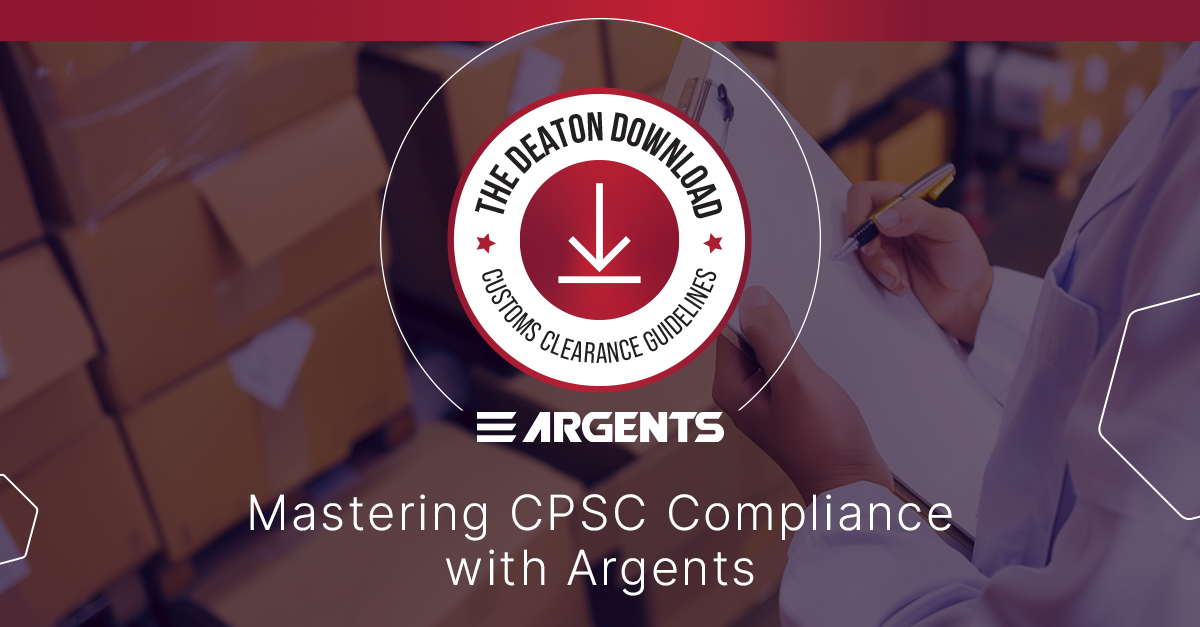The Consumer Products Safety Commission’s (CPSC) stringent requirements for children’s products underscore the importance of compliance in the import process. Importers must stay informed about these regulations to avoid disruptions and ensure the safety of imported goods. By understanding and adhering to CPSC standards, importers can handle the complex regulatory landscape, ensuring the seamless entry of products into the U.S. market.
Key Requirements for Children’s Products
Children’s products, defined as those primarily intended for children aged 12 and under, must meet stringent safety standards. U.S. importers and domestic manufacturers are responsible for ensuring compliance with these regulations. Key requirements include:
- Permanent Tracking Information: This information must be affixed to the product and its packaging, and identifying information such as the manufacturer’s name, production location, and batch number must be provided.
- Testing Requirements: Products must undergo third-party testing to ensure they meet safety standards, including limits on lead content, lead in paint and surface coatings, and phthalates. Testing must be conducted by CPSC-accepted laboratories.
- Children’s Product Certificates (CPC): These certificates confirm that products comply with applicable safety rules and must accompany each shipment.
Lead Content Regulations
Children’s products must comply with strict limits on lead content as total lead content must not exceed 100 parts per million (ppm) with acceptable amounts of lead in paint and surface coatings not to exceed 90 ppm.
Materials like untreated wood, paper, and natural fibers are generally exempt from lead content testing.
Phthalates Testing
Phthalates used in the production of plastics must be tested in toys and childcare items. The limit for each phthalate is 0.1%. Products like bibs, sleepwear for children under three, and certain toys must comply with these regulations.
Durable Infant or Toddler Products
- Registration Cards: These products must include a product registration card to help facilitate recalls and safety notifications.
- Permanent Markings: Each product must be permanently marked with the manufacturer’s name, contact information, model name and number, and date of manufacture.
Apparel and Textiles
- Drawstrings: Children’s upper outerwear in sizes 2T through 12 cannot contain hood or neck drawstrings. Outerwear with waist and bottom drawstrings must meet ASTM F1816-97 standards.
- Flammability Testing (16 CFR part 1610): All textiles used for adult and children’s wearing apparel must pass flammability tests. Specific exemptions apply, such as certain hats, gloves, footwear, and interlining fabrics.
- Children’s Sleepwear: Children’s sleepwear must meet stringent flammability standards to ensure safety during sleep.
Importance for Freight Forwarders and Customs Brokers
Compliance with CPSC regulations is crucial for importers of children’s products and other regulated items. Ensuring that products meet CPSC standards helps prevent delays and detentions at ports, facilitating smoother transportation processes. Non-compliant products can be detained or conditionally released pending further testing or evaluation, seriously affecting the supply chain.
Screening and Compliance at Ports
Products regulated by the CPSC are screened at ports to ensure compliance with the applicable standards:
- X-Ray Fluorescence (XRF) and Fourier-Transform Infrared Spectroscopy (FTIR): Used to detect hazardous substances.
- Screening Templates: Various templates are used to assess the safety of products such as small parts, rattles, and pacifiers.
Compliance and Enforcement
- Detention Authority: CPSC has a 60-day detention authority for non-compliant products. Detained products must remain in a CBP-bonded facility until testing is complete.
- Reconditioning: Importers must recondition non-compliant products within a specified time frame, providing proof of compliance through updated test reports, pictures, and affidavits.
Additional Regulated Products
Besides children’s products, the CPSC regulates several other key product categories:
- Toys and Childcare Articles: Must meet various safety standards, including limits on phthalates and heavy metals.
- General Use Products: Items like bicycles, helmets, mattresses, and lighters require a General Certificate of Conformity (GCC) to certify compliance with safety standards.
- COVID-19 Related Products: Consumer face masks (non-medical), non-medical gowns, and gloves must meet specific testing requirements.
Ensuring compliance with the CPSC’s comprehensive range of product safety standards is crucial for smooth import operations. Importers must stay informed about these requirements to prevent delays and avoid penalties. By adhering to CPSC regulations, importers can ensure the safety and reliability of their products, facilitating their seamless entry into the U.S. market.
For more detailed information and updates on specific product requirements, visit the CPSC website and relevant sections for lead content, phthalates, flammability testing, and more.
Don’t let CPSC regulations disrupt your business. Contact Argents Express for seamless import solutions.
